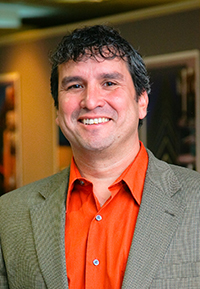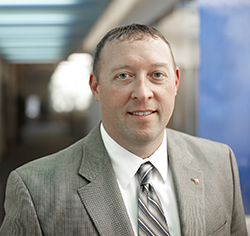Q&A: Design Roundtable
Correctional News interviewed leading architects about the current trends and future challenges of the correctional building industry. Gerald Guerrero, AIA, senior vice president for CGL; Mike Retford, vice president, west regional leader of justice for HOK; and Darrell Stelling, AIA, principal for DLR Group each shared valuable industry knowledge from the design perspective. Here are some of the questions they answered that didn’t make the design roundtable article being published in the January/February issue. Stay tuned for the full feature in January.
Q: What design trends have you noticed happening in the industry and how has your company worked to keep up with those trends?
 Guerrero: We as a profession are designing to the inmate’s specific needs. We are finally designing facilities with the adequate spaces for program and treatment to meet these specific needs of the different inmate classifications. I believe as a profession we have finally figured out that we are not only designing these facilities for the inmates but for the staff and providers that work day in and day out in these facilities. Providing sufficient natural light is a major issue for both.
Guerrero: We as a profession are designing to the inmate’s specific needs. We are finally designing facilities with the adequate spaces for program and treatment to meet these specific needs of the different inmate classifications. I believe as a profession we have finally figured out that we are not only designing these facilities for the inmates but for the staff and providers that work day in and day out in these facilities. Providing sufficient natural light is a major issue for both.
Retford: The increased need for medical and mental health care within the corrections and detention inmate population is arguably the single largest trend in corrections and detention. Health care design has always been a big part of HOK’s practice and the blending of the health care practice and the justice practice has been a natural adjustment to this need. HOK along with Dewberry Architects are in the final construction phase of the DeWitt Nelson Correctional Annex in Stockton, Calif. This facility is an annex of the recently completed Correctional Health Care Facility. The facility will provide both an extended outpatient housing and specialized general population housing. This project demanded a high level of interaction with the CDCR medical and mental health professionals. I believe that we will see more and more of these types of projects in the future.
Stelling: In addition to this refocusing of design services, we are also seeing more agencies (both courts and corrections) trying to sort out how to deal with the huge demand to serve the mentally ill in our justice system. Counties and states are now creating and staffing courts that specialize in mental health issues. The medical needs of these individuals held in our correction and detention facilities are being considered and, of course, how to help them move further toward sustained health will be key in reducing recidivism. It may require designing unique spaces geared more toward healing rather than detaining an inmate and that will change the way we think about designing correctional facilities.
Q: Are there any new technologies that you are especially interested in seeing implemented at correctional facilities?
Guerrero: Obviously as designers, we want to continue to explore the technologies that will continue to provide the owner’s with energy-efficient buildings — not only on the engineering systems design, but the building materials as well. Though it’s not a new technology, I believe we need to continue to find ways of getting natural light into all areas of deep within these facilities. We also have to be conscious as a profession that we are also not trying to push too much technology into these facilities before the technologies are ready.
 Retford: I believe that it is really not about a new technology but about the appropriate levels of technology. Technology should help the correctional professional do his job better. An over-reliance on technology can be dangerous, as systems need to be reliable and proven. The lack of technology can be just as dangerous if not more so. A little over two years ago there was a fire in a prison in Honduras in which almost 400 inmates died. I had had the opportunity to tour that prison about eight months before this tragic event. There was virtually no technology in that prison. An early fire detection system and remote unlocking systems might have reduced or eliminated the tragic loss of life in that fire. At the same time, an overly complex system in a country where electrical system failures routinely happen may well have proven just as tragic. The point being, that the appropriate level of technology should always be the goal.
Retford: I believe that it is really not about a new technology but about the appropriate levels of technology. Technology should help the correctional professional do his job better. An over-reliance on technology can be dangerous, as systems need to be reliable and proven. The lack of technology can be just as dangerous if not more so. A little over two years ago there was a fire in a prison in Honduras in which almost 400 inmates died. I had had the opportunity to tour that prison about eight months before this tragic event. There was virtually no technology in that prison. An early fire detection system and remote unlocking systems might have reduced or eliminated the tragic loss of life in that fire. At the same time, an overly complex system in a country where electrical system failures routinely happen may well have proven just as tragic. The point being, that the appropriate level of technology should always be the goal.
Stelling: I am a fan of any new technology that can minimize the amount of staff required to operate facilities. I’m in favor of things like video visitation to minimize staff intensive movement of inmates or pharmacy medicine dispensing machines to reduce need for continual, on-site pharmacy staff.
Q: What is the most challenging correctional project you’ve worked on and what made it so difficult, and how did you over come those difficulties?
Guerrero: Another tough question. I have worked on a number of difficult projects in my career. I believe they all have their inherent challenges. Each one is different; each user operates differently.
Retford: My most recent challenging correctional project recently has been the DeWitt Nelson Correctional Annex in Stockton, CA. The project has been a great project but it has been the most heavily scrutinized project I have ever worked on from an ADA perspective. The challenges of providing a secure and accessible facility have been many and varied. Providing a door opening that is a detention grade (350 lbs +) door that can meet the 5 lbs ADA pull force is nearly impossible. Laying out a cell that meets all of the access clearances for the toilet, sink, desk, bunk and cell door proved to be much more difficult than one might think. Additionally, the project goal was to size all of the cells so they could be converted to an accessible cell at some point in the future. The effort of “right sizing” the cells so that they meet all of the requirements and do not drive the square footage of the project to a point that it exceeds the program and budget was a challenging exercise. As with any difficult design problem, working closely with the client and the client’s program manager’s ADA compliance officer was the key to resolving the compliance issues.
 Stelling: Every project has its own unique challenges, but the one that stands out is the first that required my leadership. This was the 2,500 bed Adams County Correctional Facility just outside of Natchez, MS. This project came on the heels of DLR Group developing a new prototype model facility for the owner. This project was delivered as a CM at Risk project and the biggest challenge was the fast-track schedule. I remember my first meeting in Natchez where I met all the local engineering consultants and contractor for the first time. The outcome of the day’s meetings was the decision to break ground in just a few short weeks. That meant we needed all of our preliminary civil documents completed in two weeks. I remember being quite overwhelmed at the required pace, but I relied on the prototypes to help drive decisions which alleviated a large burden of starting from scratch. I also made it a priority to develop a tight relationship with the contractor, which was probably the number one thing in making that a successful project. Straight lines of communication and trust in your owner, design and construction partners, is the most vital element of making a project a success.
Stelling: Every project has its own unique challenges, but the one that stands out is the first that required my leadership. This was the 2,500 bed Adams County Correctional Facility just outside of Natchez, MS. This project came on the heels of DLR Group developing a new prototype model facility for the owner. This project was delivered as a CM at Risk project and the biggest challenge was the fast-track schedule. I remember my first meeting in Natchez where I met all the local engineering consultants and contractor for the first time. The outcome of the day’s meetings was the decision to break ground in just a few short weeks. That meant we needed all of our preliminary civil documents completed in two weeks. I remember being quite overwhelmed at the required pace, but I relied on the prototypes to help drive decisions which alleviated a large burden of starting from scratch. I also made it a priority to develop a tight relationship with the contractor, which was probably the number one thing in making that a successful project. Straight lines of communication and trust in your owner, design and construction partners, is the most vital element of making a project a success.
